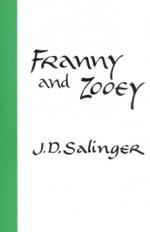|
This section contains 2,186 words (approx. 8 pages at 300 words per page) |

|
SOURCE: Dev, Jai. “Franny and Flaubert.” Journal of American Studies 25, no. 1 (April 1991): 81-5.
In the following essay, Dev discusses the function of allusions to Gustave Flaubert's novel Madame Bovary in Salinger's novella Franny.
This note is based on the assumption that in a text all foregrounded intertextuality has a definite formal function. The text in such a case can be seen as insisting that the reader bring a prior understanding of the invoked texts in order to grasp its meaning. Salinger's story “Franny” (1955) in Franny and Zooey (1961) depicts a lunch which is supposed to mark the start of a happy weekend for Lane Coutell, a literature undergraduate, and his date, Franny Glass. The lunch is a fiasco and at the end the “unimpeachably right-looking girl”1 faints from nervous tension. Lane is a pretentious young man who wants Franny to hear his paper on Flaubert. The paper has fetched...
|
This section contains 2,186 words (approx. 8 pages at 300 words per page) |

|


